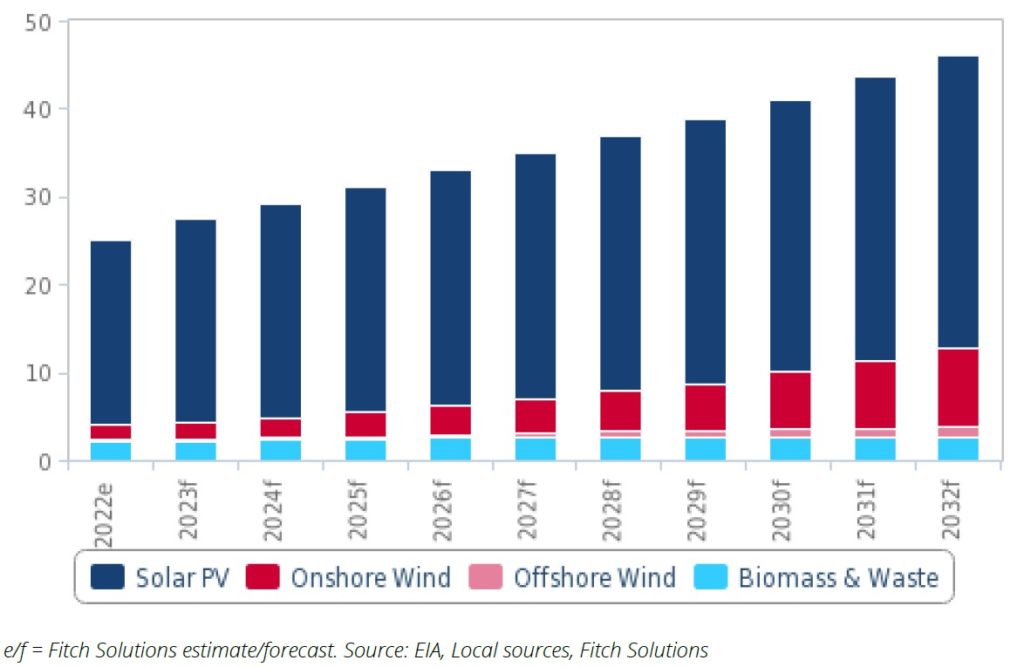
Solar PV will be the most dominant non-hydropower renewable in added capacity during the next ten years in South Korea, according to a report from Fitch Solutions Country Risk and Industry Research.
The installed capacity from renewables will grow from nearly 25GW at the end of 2022 to 46GW in 2032, for which solar PV will contribute 12GW during that timeframe.
Rooftop PV and large-scale PV project tenders launched by the Korea Energy Agency will be the main drivers of solar’s outburst.
With the change of government last year, the new administration removed the target for renewables to make up 70% of the power mix by 2050 and revised the targets for the end of the decade from 30.2% to 21.5% as it favoured building more nuclear plants.

However, non-hydropower renewables are expected to experience the strongest growth in the next ten years in terms of electricity supply contribution, with an annual average rate of 6.3%.
Recent announcements in South Korea’s PV sector include local renewable energy developer SK D&D forming a joint venture with Glenmont Partners to invest in solar PV in the country with a first phase comprising 80MW of PV projects and Portuguese utility EDPR Sunseap signing a memorandum of understanding state utility Korea East-West Power to jointly develop renewable projects in South Korea and across the Asia Pacific region.
